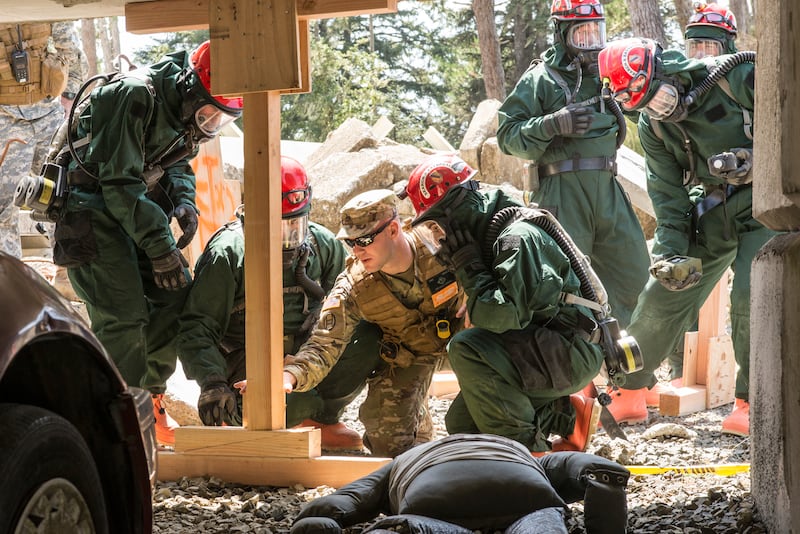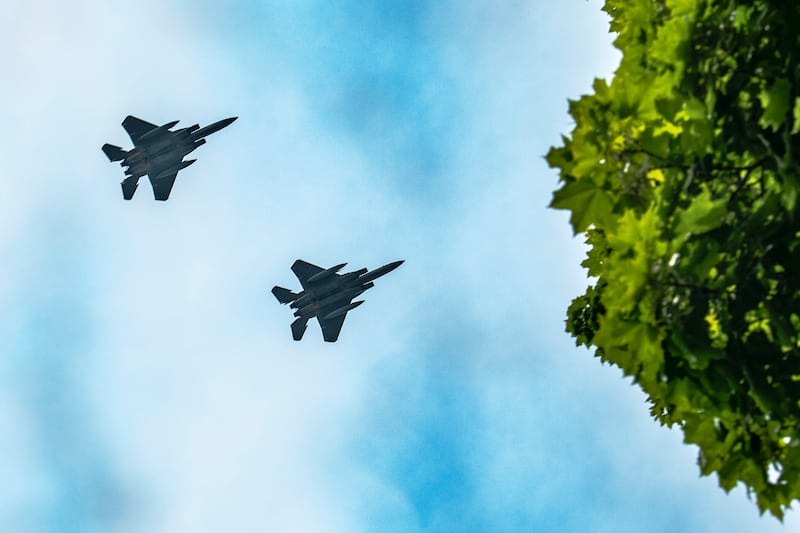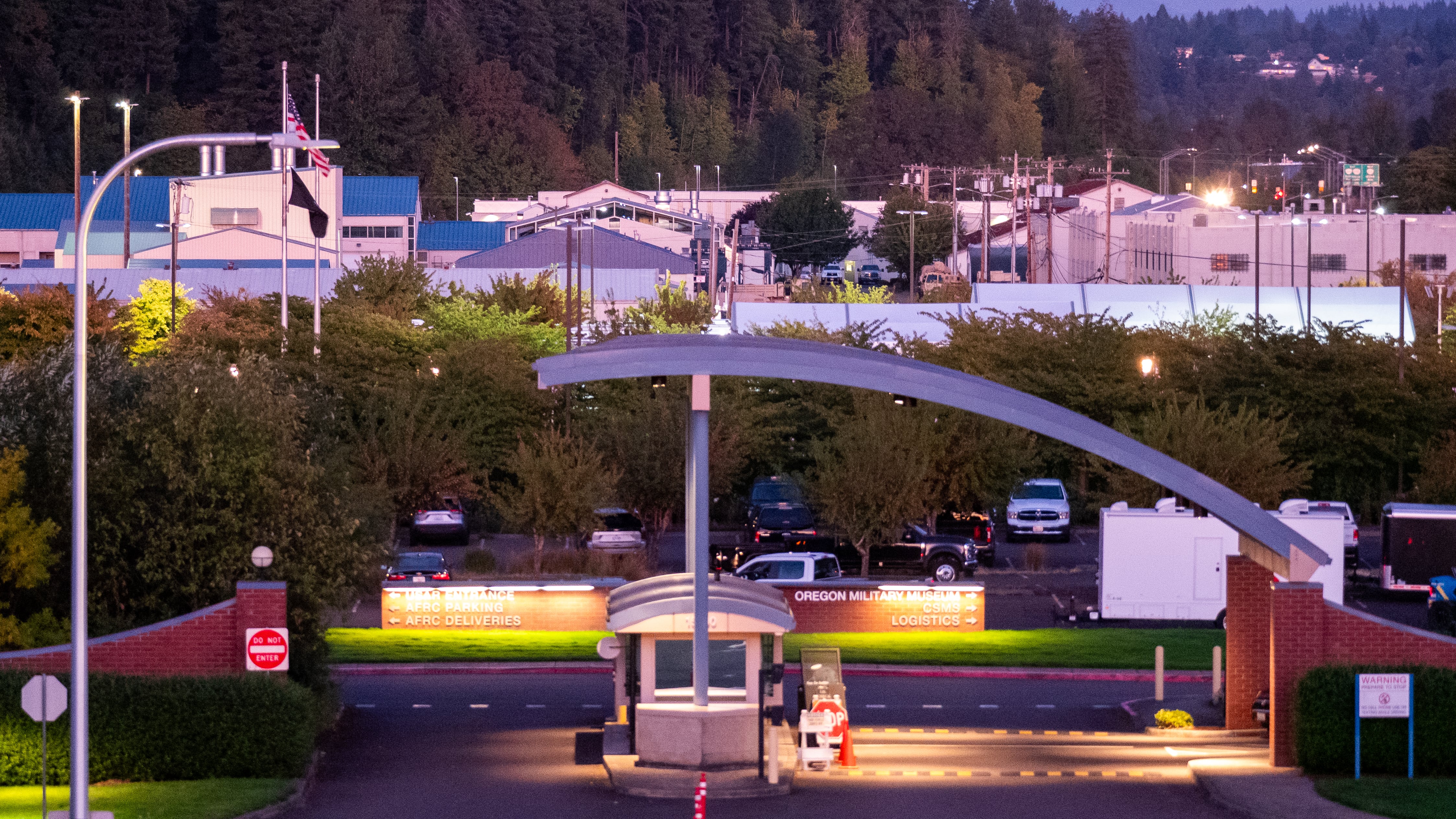You may have heard something recently about the Trump administration sending U.S. troops—the “citizen-soldiers” of the Oregon National Guard—to establish order in Portland, and a judge stepping in to say the plan seemed illegal, and the Trump administration then trying to sneak around her restraining order by mustering troops from other states, and then the same judge saying that maneuver, a “direct contravention” of her order, also seemed illegal. (At press time, an appeals court was reviewing the matter.)
In this legalistic telling, however, the actual people who make up the guard are rendered as little more than political pawns. In reality, the Oregon National Guard comprises thousands of individuals who signed up for a variety of reasons. Among them: tuition, training, a desire to serve, money and socialized military health care. Here is a bit about them.
What do they do?
Generally, the 8,000-some members of the Oregon National Guard go to school and work like most everyone else. But they have another part-time commitment, too. Every few weeks, they show up at some local armory—Portland-area ones can be found in Gresham and at Camp Withycombe in suburban Clackamas County—and they get bused, or ship out in Humvees, to one of the several training centers in the region for a brief period of drilling.
These centers, which they also visit in the summer for a longer training run, range in character. Near Astoria lies 2,000-acre Camp Rilea, with its “broad dune and woodland areas, firing ranges, barracks, and other facilities,” and its oceanfront view. On Bureau of Land Management property in Central Oregon is the massive Biak Training Center, where large vehicles roam. A spokesperson says the guard is working to install a new multipurpose shooting range at Rees Training Center, within the old chemical weapons depot near Hermiston—an upgrade that might save Oregon National Guard members the trip to Yakima, Wash., or Boise, Idaho, when they need to punch up their machine-gun skills.
Sometimes, all this training gets put to direct use, when some (usually small) subset of the guard gets activated for a mission in line with their particular training. This tends to happen on the orders of the Oregon governor, the Oregon National Guard’s commander in chief. Wildfires and other natural disasters are frequent occasions for an activation. Less frequently, social unrest is the cause, as when then-Gov. Kate Brown activated guard members to help manage protests in 2020. Some guard members recall, with great pride, their service during the COVID-19 pandemic.

But they report to the president too?
By law, in certain situations, guard members fall under the Pentagon’s chain of command. At minimum, this tends to happen every few years, when members step away from their everyday commitments to contribute to a U.S. military mission, often abroad.
For example: A few months ago, Oregon National Guard members of the 41st Infantry Brigade returned from a mission to Kosovo, where the military says they helped maintain peace in the Balkans, where the U.S. military has been present since 1999. The other day, another 200 soldiers from the 1st Battalion, 186th Infantry Regiment returned home after a year on the Sinai Peninsula in Egypt, where, as the military tells it, they helped guard against violations of the Egyptian-Israeli Treaty of Peace.
Then there is the use-case that President Donald Trump is pushing: The federal government, not the state, calls the guard into service to maintain order. Not since the civil rights era has the guard been used to this end without the consent of state officials. Indeed, a Trump administration lawyer told a judge this weekend that the particular law Trump has sought to invoke to justify his maneuver—10 U.S.C. § 12406—“has not been utilized anytime in history.”
This observation does not seem to give Trump and his subordinates pause. Citing numerous domestic enemies—many imaginary—in the streets of Portland, the Pentagon at Trump’s direction and against the wishes of the Oregon governor, called 200 Oregon National Guard troops into federal service on Sept. 28 for a 60-day mission to Portland.
As the Oregon National Guard chief, Brig. Gen. Alan R. Gronewold told troops in a letter shortly after, those assigned to that mission would for its duration no longer be subject to his or Gov. Tina Kotek’s command.
“I know some of you may have strong feelings about this mission,” Gronewold wrote. “That’s OK. You are citizens first, but you’re also service members who took an oath to support and defend the Constitution and follow the orders of the president and the governor. That oath doesn’t come with an asterisk that says ‘only when I agree with the mission.’ We don’t get to pick and choose. We execute lawful orders with professionalism and honor, period. That’s what sets us apart. That’s what makes us the National Guard.”
(When arranging a mission, the National Guard solicits qualified volunteers first. But if need be, it may order those with the appropriate skill set to participate.)

Why do they do it?
“To serve your community,” guard spokesman Lt. Col. Stephen Bomar told WW in a lengthy interview. “I would say the biggest thing about the guard is that you don’t get shipped away to somewhere else. You get to stay here, you get to do whatever it is you want in a civilian career in your hometown. And if you’re called up, you’re supporting your community.”
There are other benefits too. For one, a National Guard contract may fund a service member’s education. Benefits are still better for guard members when they’re activated—including higher pay, retirement points and military health care. (Notably, troops in federal service get their checks from the federal government: The U.S. Northern Command tells WW in an email that troops assigned to the Portland mission won’t get compensated during the federal shutdown, though they would get back pay whenever it ends.)
Still, in Oregon, these benefits do not appear to have lately been sufficient. Oregon’s Army National Guard reports that in 2024 it ranked 53 out of 54 states and territories in terms of meeting its recruitment goals. Bomar says the guard stands at about 82% of its target size. The Oregon Legislature has recently introduced additional financial incentives to entice guard members to extend their contracts.
What is the status of the National Guard groups assigned to the Portland mission?
The situation is fluid, and following the court order, troops have been in limbo. As of press time, according to Oregon’s governor, the 200 Oregon National Guard members were at Camp Rilea, and the 200 California National Guard members were at Camp Withycombe. (According to a spokesperson with U.S. Northern Command, the Texas National Guard members who’d been assigned to Portland remained in Texas.)
Citing the court order, Kotek told the U.S. Northern Command on Tuesday to send the federalized Oregon and California National Guard members home. The troops, she said in a letter, deserved better than the “illegal mission” to which they had been assigned.
The Pentagon and the U.S. Northern Command did not answer questions about their plans for those troops.

